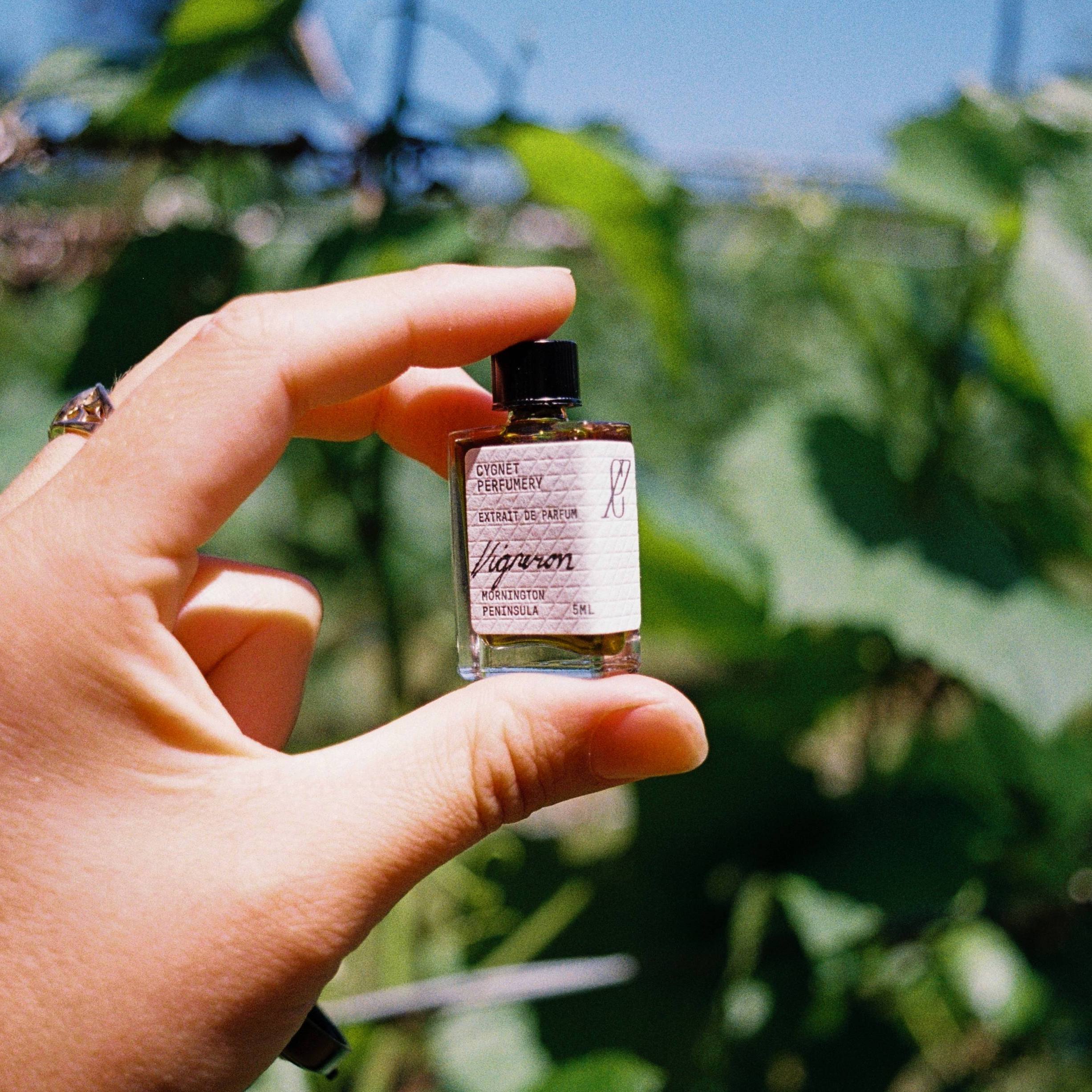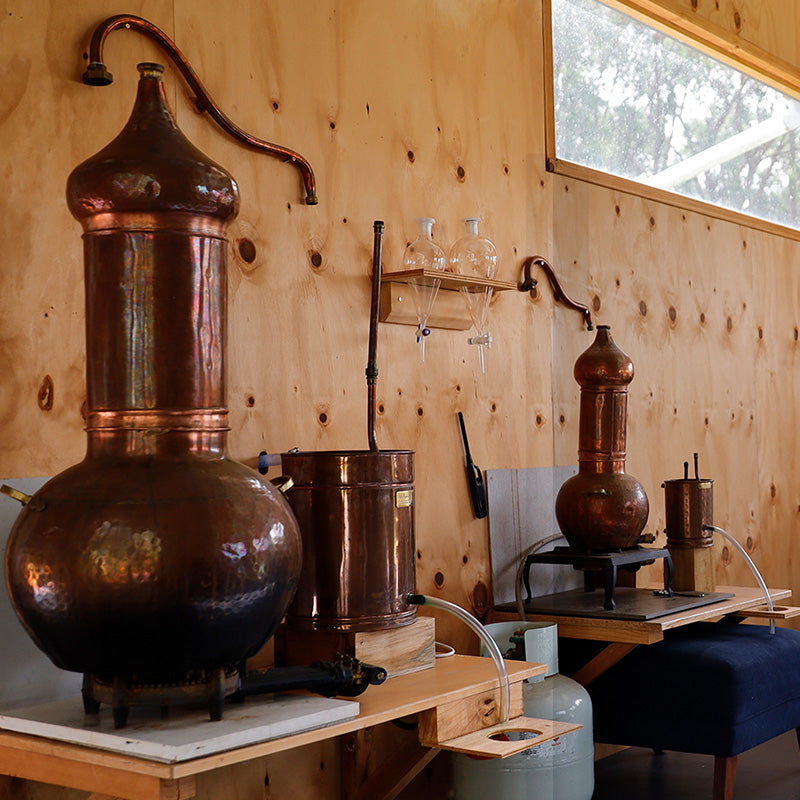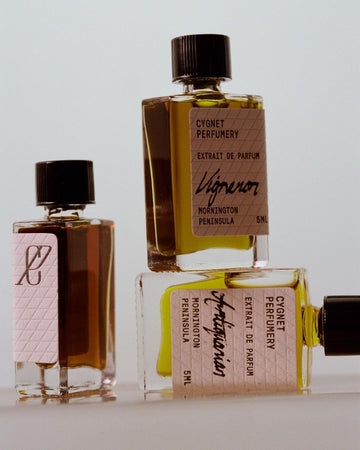THE TRADITIONAL TECHNIQUE OF ENFLEURAGE
Enfleurage is an age-old process where fat is used to capture the scent of elusive flowers too delicate for other processing methods. The traditional technique became widely know after the method was adopted in the 16th Century perfume hub Grasse, France.

There are two variations depending on the flower being used – hot or cold enfleurage, here we’ll focus on the later.
Traditionally, glass plates in a wooden frame called a ‘chassis’ were generously coated in fat. Whilst today we use vegetable fats, back then it was tallow. Hand-picked blooms, such as jasmine and tuberose, were carefully placed on the fat and recharged daily until the scent was strong enough. It typically takes up to 60 days, and at least 30 charges to render a highly fragrant fat, which is then called a ‘pomade’. The pomade would then be washed with alcohol to render an ‘extrait’, and then further processed to reveal the most heavenly, true-to-life ‘absolute’.
Enfleurage is a captivating method that will have you traversing your neighbourhood for elusive flowers, and in time smelling just like them. We’ll share the method below.

You Will Need
2 x Medium-Large glass bowls/trays that can be stacked together (can be found in most second hand shops – pyrex dishes are great)
Vegetable Butter/Fat (we recommend shea butter but more on that below)
Fragrant Flowers suitable for cold enfleurage (read below)

Which Fat to Use
The most commonly recommended fats to use are coconut oil, shea butter or palm oil. Please, please don’t use palm oil – you can research that one for yourself. As for coconut oil – it is easily accessible, however it does pertain a unique aroma that may or may not enhance your final product. We use organic shea butter (and make sure you order extra to lather on your body – you’re welcome). Whilst we usually stay clear from refined oils for skincare due to the heat treatment damaging the healing properties of the lipids, for the purpose of enfleurage they work well due to being almost odourless.

Flowers and Fragrant Materials
This is a non-exhaustive list of flowers suitable for cold enfleurage, the best way is to play and see what works. Allot of flowers are not diffusive enough, or are too fragile and will fall apart on the fat causing mould to quickly grow. Ensure what you are using is safe/ suitable to put on your skin.
Suitable candidates may be Jasmine, Tuberose, Stock, Violet, Narcissus, Lily of the Valley, Magnolia, Peony, Sweet Peas, Carnation, Honeysuckle, Frangipani, Native Frangipani, Gardenia, Hyacinth, Lilac, Lily, Honey Myrtle, Linden Blossom, Genet, Pittosporum.
Typically, Rose, Mimosa and Orange Blossoms were extracted via hot enfleurage method, however I have had some success via cold enfleurage.

Preparing the ‘Chassis’
Sterility is everything with making skincare, and perfume. Always thoroughly clean and sterilise your plates before beginning. If you have access to perfumers alcohol, this is how we do it after washing with dish-soap and water. Otherwise, you can follow the method used for sterilising glass jam jars.
Spread your chosen fat using a spatula onto the glass plate so that it is around 1cm thick. If you live in a cold climate, you may need the aid of a baine marie to gently warm your chosen fat so that it becomes spreadable and easier to work with, and then allow it to set. Some people slash the fat in a criss-cross pattern so there is more surface area for scent to be absorbed. Repeat with the other plate.

Creating the Pomade
Now that your glass is smeared with fat, it’s time to adorn one of the plates with flowers. If you don’t have access to one kind of flower consistently, you can co-enfleurage with what’s accessible to you. Carefully pick the flowers, ensuring to discard wilted, old or damaged flowers. Take off any leaves or green parts, and ensure they are free of moisture. Some may need to be left to sit for an hour before using to loose some of their moisture content. The best time to harvest some flowers is late at night, when they are most fragrant. Others are best picked after the sun has shown it’s face a little, so that the dew drops have just evaporated. Lay the flowers on the fat face down, covering the entire surface. Place the other glass plate you prepared on top, to enclose the flowers with glass walls of fat.
Repeat this process upwards of 30 times, or until you are satisfied with the concentration of scent. It will usually take at least six charges before you begin to notice the scent permeate the fat.
Now you can enjoy your pomade – excellent in solid perfumes, used as is on your pulse points, or incorporate it into a fragrant body butter.
I won’t go into further processing due to most people not having access to 95% alcohol, which is needed to create the absolute. However, if you have questions feel free to comment below.

Preventing Mould from Growing
The most common issue that can happen with enfleurage is mould growth, which you don’t want to put on your skin and will have to be discarded. To avoid the bitter disappointment of hard work going in the bin, ensure the flowers you put on are dry, not damaged, and are changed frequently (every 1-2 days depending). Some delicate flowers that are quick to wilt will need to be removed as soon as 6 hours. Ensure your hands are clean and dry before picking and laying flowers on the fat. Any moisture and your enfleurage is likely to go mouldy – watch carefully for these signs. Some people prefer to have a metal cooling rack between the fat and the flowers to avoid direct contact, however this is not the traditional way and I have found it causes troubles if it doesn’t fit neatly in your vessel.




